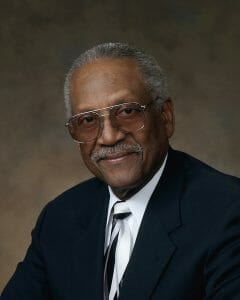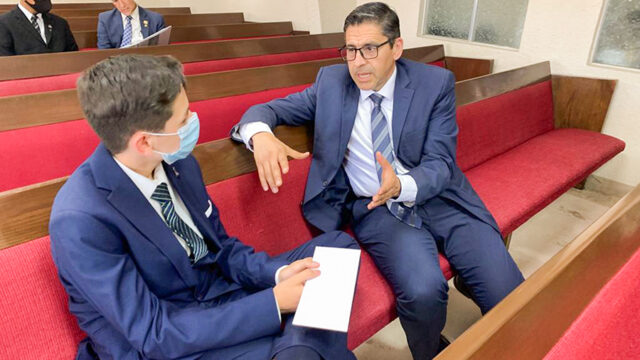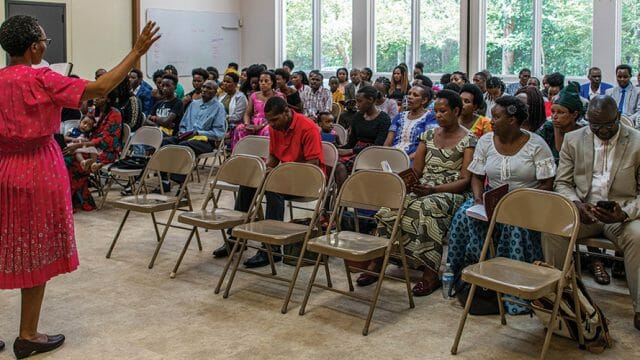In an era of overdue apologies and continuing challenges on race relations in various areas of Adventist life—particularly on college campuses—Andrews University Press […]

In an era of overdue apologies and continuing challenges on race relations in various areas of Adventist life—particularly on college campuses—Andrews University Press is publishing a landmark new book on the subject by a legendary Adventist leader.
Calvin B. Rock, former long-time president of Oakwood University, former chair of the Loma Linda University Board of Trustees, and retired general vice president of the General Conference, has authored what one prominent Adventist historian claims is “the most important book ever published on race relations in the Adventist Church.”

Andrea Luxton, Andrews University president and chair of the Andrews University Press board, said that “Protest and Progress: Black Seventh-day Adventist Leadership and the Push for Parity” will be released on May 1. “It would be hard to find a more authoritative and respected leader to address this difficult subject than Dr. Rock,” Luxton said. “His 63 years of keen observation and active participation in these issues as a pastor, change-making academic leader, and church statesman, along with his deep passion for the unity of the church and the Righteousness of Christ, make his perspective absolutely essential to any understanding of our history and our future.”
“Protest and Progress” presents a broad overview of the history of administrative race relations in the North American Adventist church, according to Ronald Knott, director of the Press. Rock’s primary focus is on how the church has made provision for leadership roles and employment equity among Blacks and Whites. Rock looks at four major protest movements that arose within the Black community regarding its members’ ability to advance the mission of the church in ways relevant to their context. These were the push for administrative integration (1889–1929), which failed; the push for Regional conferences (1929–1944), which succeeded; the push for Black Union conferences (1969–1980), which failed; and the push for a separate and equitable retirement system for Regional conference employees (1998–2000), which succeeded. He also candidly addresses the strongly differing opinions through the years within the Black leadership community over the best approach to progress, whether by full integration at all levels of church leadership or by what Rock terms “modified self-determinationism.”
Building on that history, Rock makes a sociological, theological and philosophical argument for the effectiveness and necessity of the current Regional conference system of mission that administers resources according to racial and cultural opportunity.
“Some Adventists in North America have raised questions about the wisdom or necessity of our current system,” Knott said. “We often cite the millennial generation as a group with the most doubts or who believe our current system is an embarrassment. But there are many in other demographics with similar views, and some of our preachers have talked about it. Dr. Rock’s unique contribution is not simply to make a historical argument but to give us a foundation from history for a more important theological argument based on mission and practical human relations. Whether a reader agrees is, of course, an open question. What is not in question is that a genuine discussion must address Rock’s perspective.”
A major feature of the book, according to Knott, is the extensive collection of appendices, all primary source documents relevant to the historical discussion. Among these are letters to applicants from Adventist colleges, refusing enrollment to students on the basis of ethnicity; a 1953 letter from General Conference president W.H. Branson to board chairs of colleges and hospitals, urging them to begin regularly admitting Blacks as students and patients; and a vigorous protest, in letter form, to a GC president about how the Annual Council debate was conducted that ultimately defeated the “push” for Black Union conferences.
Advance praise for the book is wide and high. Ricardo Graham, president of the Pacific Union Conference of Seventh-day Adventists, said, “Protest and Progress is an insightful and powerful presentation of the biblically-based call for social justice in society at large and in the church, as well as a history of race relations primarily among Black and White Seventh-day Adventist leadership in the North American Division with implications for the entire world church. This is a must read for anyone curiously interested or seriously concerned with these issues and more. I highly recommend it.”
Craig R. Jackson, dean of the School of Allied Health Professions at Loma Linda University, said, “Dr. Rock’s book is the perfect antidote for the collective amnesia of the Seventh-day Adventist church when it comes to racism and the church’s reluctance to confront the antithesis of the gospel of Jesus Christ.”
“[This book] combines first-rate scholarship with the kind of insight that could only come from the author’s deep personal roots and decades of leadership in the Black Adventist experience,” said Douglas Morgan, professor of history at Washington Adventist University, who also described it as Adventism’s most important book on race relations. “Lucid, candid, provocative, yet redemptive, Protest and Progress is an exceptionally rare and invaluable gem given the church by one who has long loved it and served it with high distinction,” Morgan said.
“Protest and Progress” will be available after May 1 directly from Andrews University Press (universitypress.andrews.edu), Adventist Book Centers and major online retailers.
The Press, organized in 1969, is the primary academic publishing house to serve the worldwide Seventh-day Adventist Church. Founded in 1874, Andrews University is the flagship institution of higher education for the Seventh-day Adventist Church and offers more than 200 areas of study including advanced degrees. Its main campus is in Berrien Springs, Michigan, but the University also provides instruction at colleges and universities in 19 countries around the world.








